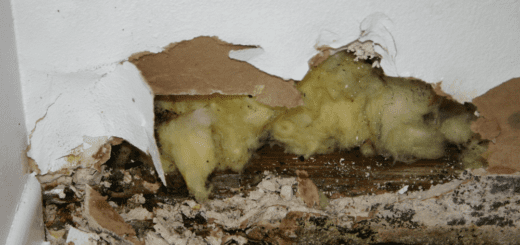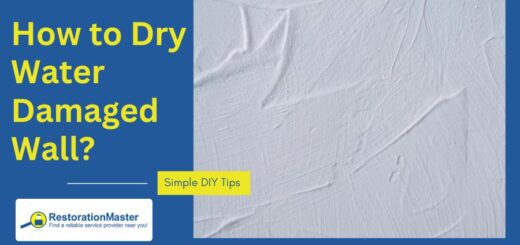How to Prepare Drywall for Painting

Painting can be done easily in most homes. However, when it comes to drywall, there is background knowledge that you need to understand before you start painting. There is prep that needs to be done to ensure that paint stays on properly and dries like it should. Here are some things you need to know on how to prepare your drywall for painting:
- Purchase all the supplies including drywall mud, sandpaper or a pole sander, microfiber cloth, white vinegar, spongeA sponge is a porous material used to absorb liquids or clea... More, and high-end primer.
- Inspect the drywall with a bright work light for any holes or imperfections and sand them with a 150-grit sander or finer. If there are any holes, make sure to fix them with the specialized paste before you start any other work.
- Broom/dust the walls and let the dust settle.
- Always sweep and mop the floor to remove the dust. You will need to use a wet/dry vacuum for this job.
- Wash the walls one more time with a barely damp cloth or spongeA sponge is a porous material used to absorb liquids or clea... More. You can use one cup of vinegar in one gallon of water and dip the spongeA sponge is a porous material used to absorb liquids or clea... More into the mixture. Rinse out the spongeA sponge is a porous material used to absorb liquids or clea... More and if the water is dark, change it out and repeat the process until the water is clear.
- Allow everything to dry. You can direct a fan toward the wall to make the process faster. You can start painting with primer once the drywall has completely dried.
- Remove the dust again with a microfiber cloth to ensure no dust is left on the walls.
- Paint the drywall with drywall primer on all the walls all the way to the corners.

Only once these steps have been completed is when you can start painting the drywall. This will ensure that the paint will stay on properly and for a long time so you will not need to constantly repaint it.
Drywall Painting – What to Expect
You should always use primer when painting your drywall to make sure that the paint goes on smoothly and so it does not peel in humid conditions later. Also, use a black towel over the surface to check if there is any dust left on it.
If you are looking for a clean, more polished look while also protecting the wall from damage from small nicks, it is best to use a latex-based primer. Also, always make sure that you are using a high-quality primer so that it goes on evenly and nicely onto your wall after you are finished.
When you start painting the primer to the wall, make sure to use small strokes until the wall is fully covered. Once you’ve completed this step, it is important to let it dry and go over the surface with your hand to make sure there is not dust left over.
Finally, you can paint the walls with the color you’ve chosen. Always use two coats of paint.
If you’ve grasped all of the steps above and you are ready to start painting your drywall, be sure to check out these last few tips before you start:
- After you’ve used the latexLatex is a natural or synthetic rubber material commonly use... More primer, make sure to check for any defects that have become visible after the first primer coat. Make sure to seal these areas before the final coat of primer is done.
- Coat the wall with paint with an intermediate coat and then a final coat. Always make sure that you are not doing big repairs to the wall after the intermediate coat otherwise you may ruin the finish.
- Be aware of how installing your lighting systems may affect the wall preparationPreparation is the steps taken to ready a property, equipmen... More. These projects can change the temperature and cause movement of seams and walls and you may be left with more defects that will appear on the wall. Be aware of this so you can get these imperfections fixed.

Preparing and painting the drywall may look like a tedious and complicated process, however it is crucially important to prepare the drywall for painting. Not only does it allow for paint to last longer, but it also ensures that you do not have defects showing on the wall once you are all done painting. Not preparing the drywall properly for painting can be costly as you may have to fix any dust particles that ended up in your paint or additional dings and defects that became visible once you were done painting.
Common FAQs for Painting Drywalls
Do I need to prime drywall before painting?
Yes, priming is essential, especially if the drywall is new or if you’re making a significant color change. Primer helps to seal the drywall, create an even surface, and improve paint adhesion.
How do I fill holes and cracks in drywall?
How should I clean drywall before painting?
Clean the drywall with a dry or slightly damp cloth to remove dust and debris. Ensure it’s completely dry before applying primer or paint.
What type of paint should I use on drywall?
For most interior drywall applications, use a latex-based paint. It’s easy to apply, dries quickly, and is available in various finishes (e.g., matte, eggshell, satin, semi-gloss).
How many coats of paint are needed?
Typically, two coats of paint are recommended for a uniform, even color. The first coat is the base layer, and the second coat ensures complete coverage and depth of color.













